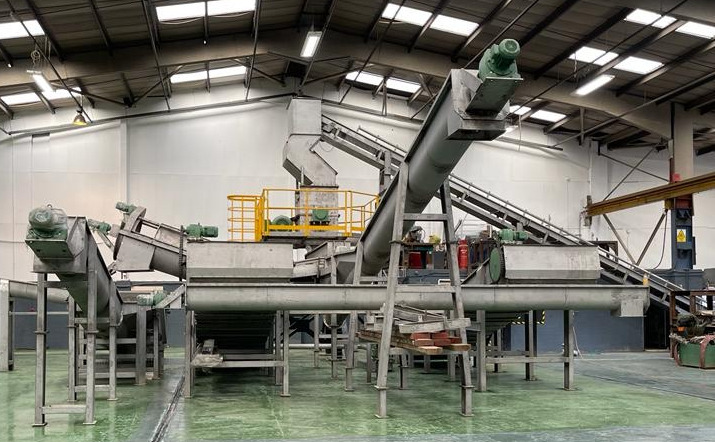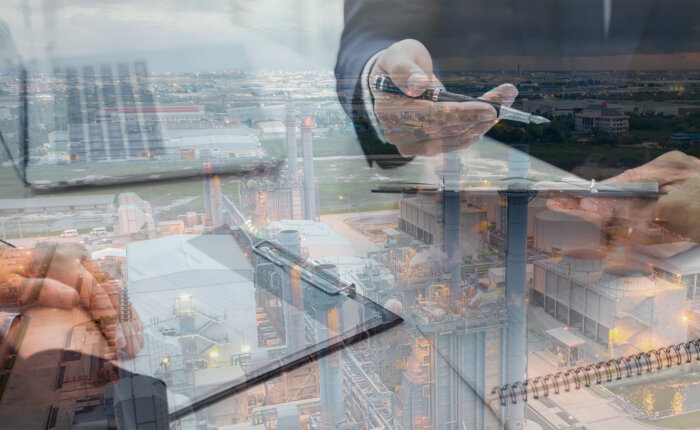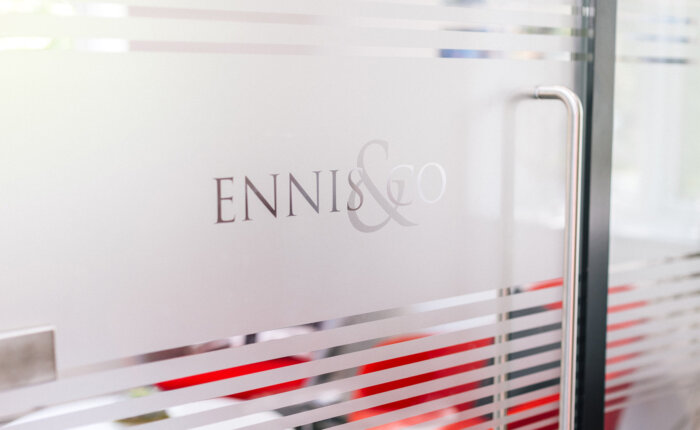
In a career that includes racing cars, owning and managing a multi-franchise automotive group, running Aston Martin Racing and subsequently Lola Cars International, along with a business advisory consultancy, Robin Brundle is the Executive Chairman at Technology Minerals Plc.
He leads a company which provides practical solutions to enable a sustainable supply of battery metals – so crucial to the successful transition to a net zero economy – and in conversation with Al Clarke explains why it’s important to establish a circular economy for this material to meet the growing demand from the UK and global market.
Al CLARKE: We’re just over six years away from an all-electric new car market in the UK and the EU will be the same in 2035. Beyond the consumer adoption debate, hardly a day goes by without a news story about the need for gigafactories to supply batteries or concerns about the access to the minerals needed to make batteries. Robin, can you tell us first why we need a circular economy now, at such an early stage in the evolution of electric vehicle technology?
ROBIN BRUNDLE: There are two key drivers here, the political targets to transition to EVs, and secondly the supply of the materials needed to make the batteries for the vehicles, which is a combination of new and recycled material.
For governments to achieve the targets of transitioning to EVs, they need to have secure and sustainable supplies of the minerals required by organisations to produce batteries and manufacture cars in their countries. Today, and for the foreseeable future, most of the metals and minerals needed for automotive batteries will need to be extracted from the ground (mined), and most of these reserves are currently outside of European control.
To address the security of supply, the EU have just published (March 2023) the Critical Raw Materials Regulation setting targets to be achieved by 2030 for the production, refining and recycling of key raw materials needed for green and digital transitions.
“There are two key drivers here, the political targets to transition to EVs, and secondly the supply of the materials needed to make the batteries for the vehicles”
Here in the UK, the government has convened a Critical Minerals Resilience task force which is due to report by the end of this year. Against this backdrop of securing the supply of new materials, any material which can be recovered through recycling can therefore play an important role in achieving these targets.
The basic model of supply of battery materials in the circular economy involves production and consumption, recycling the materials for as long as possible, using them again and creating future value.
For Li-ion batteries, which power EVs, but also phones, computers and even vapes, it is technically possible to extract more than 95% of the metals which are in short supply from them at the end of their lives. By extracting and re-using them we bring another, sustainable and secure supply into the battery production chain. In terms of the significance of recycled material versus newly mined, the best academic estimates suggest that between 22% and 30% of the total demand for battery metals could be provided this way.
It is therefore essential that we establish a circular economy for battery materials now, bringing together recycling and sustainable raw extraction for Li-ion battery cathodes. For this reason, Technology Minerals was formed to create this circular economy within one group and solve the ecological issue of creating a sustainable and secure supply of cobalt, lithium, nickel and manganese.
AL CLARKE: What role does the UK play in this system of supply and recycling?
ROBIN BRUNDLE: Without getting too much into the chemistry and technology, for Li-ion batteries, the holy grail is the residue found inside the cells, which is called ‘black mass’. The black mass includes the four key metals of cobalt, lithium, nickel and manganese which can be re-used as cathode materials. This is the critical part of the battery and because of the need to have a secure supply, it is now becoming a geopolitical issue.
The EU has deemed black mass a hazardous waste, which means that it is difficult to export and by classifying it in this way, they aim to protect the supply and secure the stock within the region.
The UK government has not defined battery waste as a hazardous product, and, subject to the proper documentation and processes being followed, the UK is a battery trading nation, with the potential to separate the black mass into the key salts which can then re-enter the lithium-ion battery supply chain.
With this opportunity in mind, we are now in a race to develop the capability to separate the black mass into the component salts, working with the cutting-edge scientific teams at Warwick Manufacturing Group (WMG) and the University of Birmingham. We are also closely engaged with UK government agencies to ensure that the regulations and environmental controls create a sustainable environment in which the UK can play a leading role in the circular economy for battery metals.
“At Technology Minerals we will enable ANY Li-ion product to be processed, at scale. This is not via manual separation – our process is designed to be automated”
AL CLARKE: What are the challenges to overcome?
ROBIN BRUNDLE: We have developed the first group in the UK, which is also listed on the London Stock Exchange, designed for the sustainable circular economy for battery metals – on an industrial scale. That means using cutting-edge technology to recycle and recover key battery materials from any source, for reuse back into the manufacturing supply chain in the most appropriate way.
For example, if we take a Li-ion automotive battery that still meets 80% of the original manufacturers’ specification, instead of breaking it down for the component metals, we would re-purpose them for energy storage, providing re-certification so they can be reused as batteries.
For lead-acid batteries, which are available in significant numbers, we are looking to industrialise the recycling process because it is currently a dirty process.
Equally, as we have developed the capability within the group, we have solved practical issues such as the safe transportation of batteries. We discovered that there are limited options for United Nations-certified logistics boxes to store and transport batteries. We have all seen images and videos of battery fires which means it is imperative that Li-ion batteries are handled with the highest standards of safety. So, we created the Halo box which is approved for air, land and sea transportation for any grade of battery, in whatever condition.
In the UK we have a logistics partner with 93 vehicles operating from nine depots who collect and bring the Li-ion products to our LiBatt recycling facility in Wolverhampton.
It’s worth pointing out here that as the number of automotive Li-ion batteries available for recycling starts to grow, there are significant opportunities with other products using the same type of battery technology from which we can extract the critical metals. This includes handheld devices such as phones, batteries from eBikes, industrial equipment and vapes, all of which need to be recycled according to the Waste Electrical and Electronic Equipment (WEEE) regulations.
One recent estimate for vapes suggests that the recoverable Li-ion material from all of the disposable vapes sent to landfill in 2022 could provide sufficient metals to produce the batteries to power 1,200 EVs.
At Technology Minerals we will enable ANY Li-ion product to be processed, at scale. This is not via manual separation – our process is designed to be automated, providing solutions across industries, not limited to one vertical sector such as automotive or to one battery chemistry type.
AL CLARKE: Who are your customers?
ROBIN BRUNDLE: At the highest level we’re a solution provider for Li-ion battery recycling, and so we receive a front-end fee as the materials are received, and this varies according to the type and quality of the battery. We then process them, creating the black mass which becomes the feedstock for a refiner, which we then sell.
When you look at the detail of some of the challenges faced on the road to electrification, the need for this service becomes compelling. Take the example from the cycle industry, where around a quarter of cycle shops are now stuck with electric bike batteries that have reached the end of life. Only 15% of these shops have a disposal plan for them.
The blocker today is that until the circular economy for sustainable battery materials is established and at an operational scale, there are growing stockpiles of Li-ion batteries which have reached the end of life across various sectors with nowhere to go. This includes telecoms, offshore energy, aerospace, defence as well as leisure such as vapes, cycling but also motorsport. Governments around the world have effectively stopped the movement of this material, and so they can’t be shipped to be recycled and have to be stored for the time being.
At Technology Minerals, once we have our environmental licence, which we are expecting imminently, we will be able to switch on the first of our industrial scale plants and start to trade on an international basis.
AL CLARKE: Whilst the UK is committed to 2030 for the end of ICE, the European Commission has just granted a derogation for synthetic fuels, enabling them to be used. How much of a threat is this to the circular economy for battery materials?
ROBIN BRUNDLE: I don’t think it will be an issue because there will still be a transition to a hybrid vehicle, which has Li-ion batteries as part of the energy system. From a personal perspective, we may see hydrogen emerge alongside battery electric vehicles, and perhaps my grandchildren will see those two technologies alongside each other in future vehicles as we have seen petrol and diesel.
Looking at some of the data in terms of raw materials, in 2021 there were approximately 63,000 metric tonnes of battery scrap available for recycling. This is forecast to increase and hit 260,000 tonnes in Europe.
As a company we are aiming to process 41,000 tonnes of Li-ion material per year and 80,000 tonnes of lead-acid battery material, so we will be busy for a while yet!
AL CLARKE: Thanks for your insight into this important, but often unseen aspect of the transition for the automotive and mobility sectors from ICE to electrification. As we highlight in our ‘Skills Evolution: Roadmap 2025’ report, creative thinking and practical solutions are needed by leaders to drive future success. Technology Minerals is a great example of the value of re-purposing and evolving technical skills to enable new solutions that drive sustainable, commercial results.






